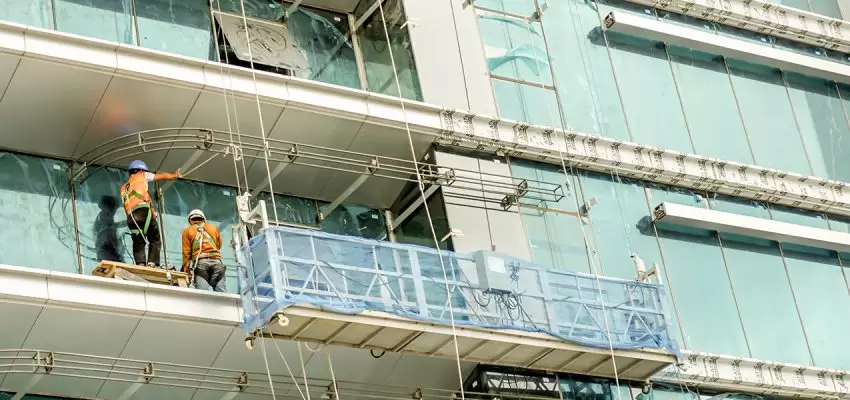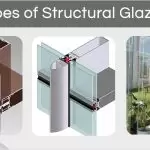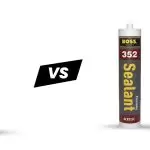Structural glazing is an innovative architectural approach that utilizes silicone sealants to attach glass facade panels directly to a building’s structural framework rather than traditional framing systems. This method creates unobstructed glass surfaces both inside and out for maximum light transmittance, views, and aesthetic appeal. With advancements in glass and silicone technology, structural glazing has become an exceptionally energy-efficient building envelope solution providing numerous benefits beyond aesthetics alone. In this comprehensive guide, we’ll explore what structural glazing is, its key benefits, and some stunning project examples.
Post your Requirement
|
Terms |
Definition |
| Structural Glazing |
Structural glazing refers to a method of constructing glass facades wherein the glass panels directly adhere to the structural framing of a building without the use of additional supportive framing elements. This technique creates a seamless, visually appealing exterior surface while providing structural integrity and weather resistance. Structural glazing systems often utilize specialized adhesives and silicone sealants to bond the glass panels to the building structure, resulting in a sleek and modern architectural aesthetic. |
| Structural Glazing Professional |
A structural glazing professional is an individual or a team with expertise in designing, installing, and maintaining structural glazing systems. These professionals possess specialized knowledge in architectural glass systems, building codes, structural engineering principles, and construction techniques. They oversee the entire process of implementing structural glazing, from initial concept development and design to fabrication, installation, and final inspection. Structural glazing professionals ensure that the glazing system meets safety standards, building regulations, and client specifications, while also optimizing performance, durability, and aesthetic appeal. |
What is Structural Glazing?
Structural glazing, often referred to as glass curtain wall systems is a specialized facade method that attaches large glass panels to a building’s floors and walls using high-strength silicone sealants that act as an adhesive. The silicone seals form a weather-tight structural connection, allowing the glass facade to directly carry wind, snow, thermal, and dead loads back to the building structure. This glazing method creates expansive seamless glass surfaces without the visual interruptions of traditional aluminum framing systems. It delivers maximum light transmittance for building interiors along with unobstructed outward views.
Key Benefits of Structural Glazing
Structural silicone glazing delivers significant benefits for modern buildings:
- Light Transmittance – With expansive glass facade areas unencumbered by traditional frames or mullions, structural glazing maximizes interior daylighting, even in spaces far from perimeter windows. This enhances occupant comfort, productivity, and energy efficiency by reducing reliance on electric lighting.
- Views – The seamless glass surfaces allow uninterrupted outward views that connect building occupants to the exterior environment. Quality views have been linked to improved worker performance.
- Aesthetics – The modern, sleek, exterior glass surfaces create a striking visual appeal both inside and out. Structural glazing reflects current architectural trends emphasizing transparency and light.
- Energy Efficiency – High-performance low-emissivity glass coupled with insulating silicone sealants enables structural glazing systems to minimize solar heat gain and building envelope air infiltration. This increases occupant comfort and saves substantial energy costs.
- Acoustic Attenuation – Advanced sound dampening techniques can be incorporated into structural glazing construction to allow required noise reduction levels while still permitting expansive glass areas.
- Weather Resistance – Structural silicone offers exceptional durability and weather sealing capacity keeping out wind, rain, snow loads, and temperature extremes for quality performance over decades.
- Earthquake and Hurricane Resistance – The durable adhesive sealants maintain the glass wall connection to the building structure enabling the envelope to resist high wind pressures and seismic tremors.
- Lower Maintenance – Without aluminum framing, there is less material exposed to weather requiring periodic maintenance, repair costs, and repainting over the building lifespan.
The Need for Structural Glazing Professionals
In modern architectural design, structural glazing has become increasingly popular for its aesthetic appeal, energy efficiency, and structural integrity. As buildings continue to evolve with innovative designs and materials, the role of structural glazing professionals becomes paramount in ensuring the successful implementation and maintenance of these sophisticated systems. Here, we explore the multifaceted need for structural glazing professionals in the construction industry.
-
Complexity of Structural Glazing Systems:
Structural glazing systems are highly intricate, involving a combination of glass panels, adhesives, sealants, and structural framing elements. Unlike traditional fenestration methods, such as curtain walls or window frames, structural glazing relies on directly bonding glass to the building structure. This demands meticulous attention to detail and specialized expertise to ensure proper installation and functionality. Structural glazing professionals possess the technical knowledge and skills to navigate the complexities of these systems, from design conception to execution.
-
Architectural Innovation and Customization:
Architects and designers are continually pushing the boundaries of creativity in building design, resulting in the need for custom structural glazing solutions. Whether it’s curved glass facades, oversized panels, or intricate geometries, each project presents unique challenges that require tailored approaches. Structural glazing professionals collaborate closely with architects and engineers to translate conceptual designs into feasible solutions, considering factors such as structural performance, thermal efficiency, and aesthetic objectives. Their expertise enables the realization of architectural visions while ensuring the practicality and safety of the built environment.
-
Compliance with Building Regulations:
Building regulations and codes govern the design and construction of structures to ensure safety, accessibility, and environmental sustainability. Structural glazing systems must adhere to these standards, which vary depending on location, building type, and intended use. Structural glazing professionals possess a comprehensive understanding of relevant building codes and regulations, including seismic requirements, wind load resistance, fire safety, and energy efficiency guidelines. By staying abreast of evolving regulatory frameworks, they ensure that glazing installations comply with legal requirements and industry best practices.
-
Integration of Advanced Technologies:
Advancements in glazing technology, such as low-emissivity coatings, smart glass, and photovoltaic integration, offer opportunities to enhance the performance and functionality of structural glazing systems. However, integrating these technologies requires specialized knowledge and expertise to optimize their benefits effectively. Structural glazing professionals are adept at evaluating emerging technologies, assessing their suitability for specific applications, and integrating them into design solutions. Whether it’s improving thermal insulation, enhancing daylighting, or incorporating sustainable features, these professionals leverage technology to achieve superior outcomes in glazing design and performance.
-
Risk Mitigation and Quality Assurance:
Installing structural glazing systems involves inherent risks, including structural failures, water infiltration, and glass breakage. To mitigate these risks and ensure long-term durability, rigorous quality assurance measures are essential throughout the project lifecycle. Structural glazing professionals employ stringent protocols for material selection, fabrication, installation, and testing to uphold quality standards and minimize potential liabilities. Their proactive approach to risk management and quality control instills confidence in clients and stakeholders, fostering trust and credibility in the construction process.
-
Lifecycle Management and Maintenance:
Beyond initial installation, structural glazing systems require ongoing maintenance and lifecycle management to preserve their performance and appearance over time. Structural glazing professionals offer expertise in developing maintenance programs, conducting inspections, and implementing repairs or replacements as needed. By proactively addressing issues such as sealant degradation, glass delamination, or structural fatigue, these professionals extend the lifespan of glazing systems and optimize their lifecycle cost-effectiveness.
Conclusion
Structural silicone glazing technology enables extraordinarily transparent building envelopes with maximum light transmittance, unobstructed views, sleek modern aesthetics, and enduring weather resistance. It reflects the building design industry’s growing commitment to energy efficiency, occupant well-being, and innovative architectural expression using advanced facade materials like structural glazing solutions.






















Post A Comment